Engineer Inside
Back in the old days...
Back in March I was gearing up for a 10 day tour with more than an event each day planned. I was excited. My house was full of kit for shows in primary schools, libraries, community centres, secondary schools and on campus too.
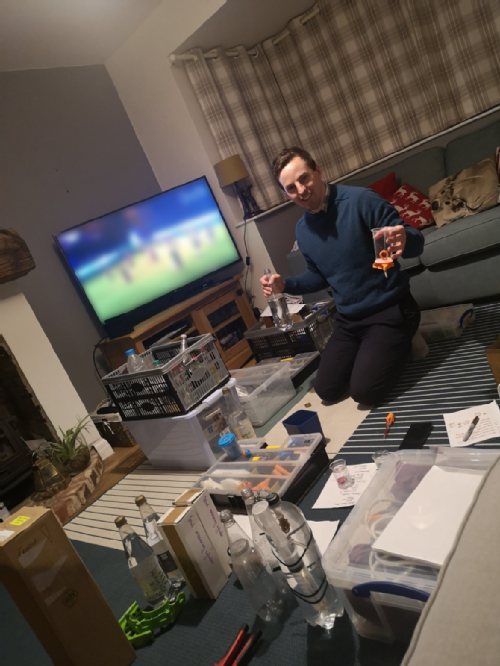
Me, just before British Science Week in early March 2020. I was discovered surrounded by equipment and kit, planning to get ready for shows.
I’m part of the Outreach team at WMG and a big focus of our work is Widening Participation. We believe in supporting young people from backgrounds that, statistically, are under-represented within the Warwick student body. In the ‘pre‑Covid’ days this meant working with community groups and schools in targeted areas.
Lockdown 1
Little did I know that just a few events into the mammoth British Science Week schedule we’d all get sent into lockdown. Just like everyone else! I’d love to tell you that the first thing that we did in the WMG Outreach team was to set out new aims for this new world. That we developed methods and plans and got straight to it...
Unfortunately, I don’t think any of us really understood the consequences of what was happening and the scale of it all until much later than those first few weeks. We could describe the mood as frantic. “Brainstorm” became the word of the day. Every day.
Mind the Gap
The one thing we could all agree on was that students at home needed engaging and exciting activities that anyone could take part in – not just the fortunate few who always have their own device, good WiFi and a decent desk to sit at.
It’s vital to stop the "advantage gap" from increasing during lockdown. We needed to find a way for students to get involved with university activities without leaving their homes. Low or no equipment. Materials that don’t cost anything or can be recycled. Activities that don’t require an adult teacher to be present (just a supervisor for safety). Challenges that don’t prescribe what to do and set rules but allow creativity to lead the way.
If you can’t bring the students to the engineering department... take the engineers to them! They'll have to be Engineers Inside. That’s where the name of our big lockdown project came from. Link: www.warwick.ac.uk/engineerinside
Engineer Inside
The original pitch:
There are no walls between subjects – artists have made the most light-absorbing paint ever and engineers have created beautiful structures. The experiences of experts in their fields across a range of subjects, if shared with learners across the country, could be hugely influential, inspiring, and valuable to the success of the next generation of creative engineers and engineering creatives.
The excellent problem-solving skills shown every day by engineers and researchers will be applied to STEM challenges that teachers can set remotely. Students will be set a challenge – e.g., Launch an Object or Build a Bridge – that they must complete using only items they have in their homes. University of Warwick researchers will provide expert knowledge, with hints and tips to start the students off – e.g. How would a materials scientist make paper into a strong material? How would a computer scientist create a rainbow-inspired artwork?
Our idea to was to take a challenge-based approach that encouraged creativity and playful learning. We wanted students to create something that could solve a problem using materials that almost everyone would have in their homes. Then, we showed those young people videos of our engineers and staff attempting the challenges themselves and explaining how their creation worked.
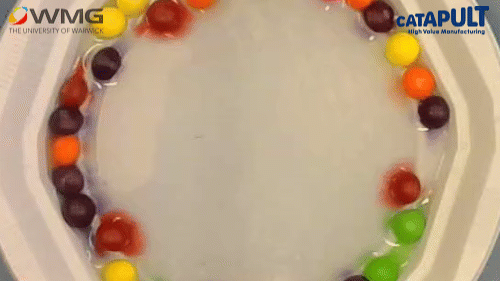 |
 |
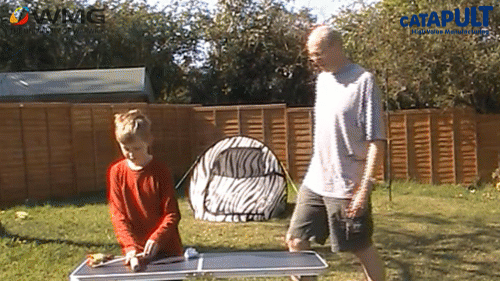 |
|
A selection of our creations from the early days of Engineer Inside. A rainbow made from sweets (top-left), A rocket made from a bike pump and a drinks bottle (top-right) and a fantastic young presenter showing a paper ball catapult! (bottom).
GRP Funding
Over the course of the first lockdown though it became clear just how manic everybody’s workload was. Some were swamped, some were left confused. One particular group who have struggled with the implications of this break in access to campus facilities are Ph.D. students. There has been a lot of noise made around the impacts that lockdown might have on Ph.D. students, one of the university’s most valuable communities.
We applied for funding support from the Keeping Cultures Connected, Keeping Connected through Culture scheme and were incredibly grateful to be successful in our request. The Connecting Cultures and the Innovative Manufacturing and Future Materials GRPs jointly funded our project. The funding allowed us to pay two Ph.D. students to film themselves taking part in the challenges we set young people.
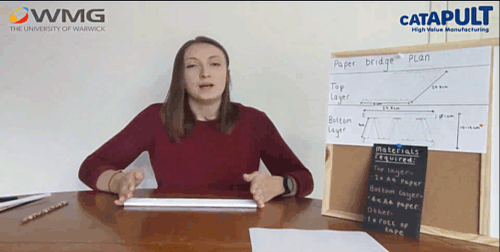 |
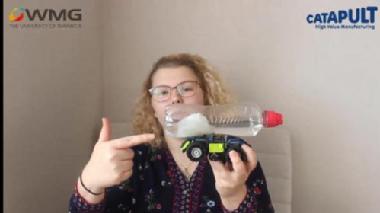 |
Rebecca Mackley (left) and Evé Wheeler-Jones (right) showing young people their expertise and problem-solving mindsets with our challenges.
One aim of the project was to encourage young people to see engineering as more than just “that person who fixes your car when it breaks". We wanted to showcase the skillsets that engineers have and their approaches to challenges. How do you define ‘success’? What do you do when the first idea you tried was rubbish? What’s the process to getting it right in the end?
But we also hope, in all our widening participation work, to achieve another aim. We want to make university seem more accessible and relatable to everyone. Especially local communities. We are a part of the community after all!
Boffin Culture
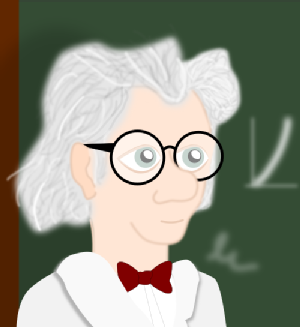 |
Showing young people at home the thought processes and skills of their ‘near-peers’ provides them with a target to aim for. It removes the ‘boffin’ status of people at universities. We are not all caricatures. |
| We don’t wait until midnight for lightning to strike while we laugh maniacally... Unless you’re a meteorologist! It is important to ‘humanise’ experts while being uncompromising about our role in educating and inspiring young people. | 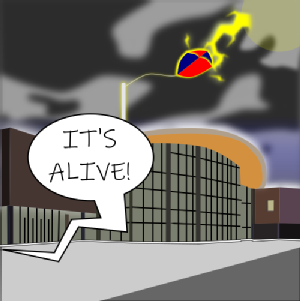 |
Just to labour that point: a 50 year study of asking young people to draw "a scientist"; and noting which gender they choose shows progress but a remaining bias towards science as being a “male” profession. I can imagine similar biases across our departments.
Without the support of the GRP funding, we would not have been able to bring Ph.D. students into this project. The immediate impact of having near-peers as role models is to make this resource more valuable to young people.
What’s next?
Lockdown hasn’t gone away and while schools are open, the homeschooling burden remains for some in isolation and it may rear its head again in the near future. We are preparing to adapt these resources to be used in the classroom by teachers, or at home by families. Given the unpredictability of the upcoming months and years, we feel this flexible approach is essential.
To support teachers, we will train them in how to use these courses. We are also looking at ways to utilise the networks of STEM professionals who have skills to share but not the experience in designing a classroom activity to boost the impact of these online resources both in the classroom and at home.
Diversity?
And finally, a note on diversity. We have made a point in this blog about bringing female role models onto the platform. But we are not done. We can do more, and we will. We acknowledge that most of the presenters on the resource are white and we would love to see more people of colour or people who identify as BME share their ideas.
At the time of putting the resources together we were very keen to stress to any contacts that getting involved was voluntary and not push too hard for anyone to get involved. This was because of the unusual demands that were already being put on people to adapt to a new world of work.
Thank you for reading!
If you have any questions or comments you can contact us at wmgoutreach@warwick.ac.uk
